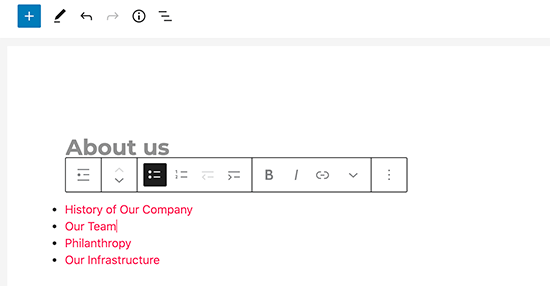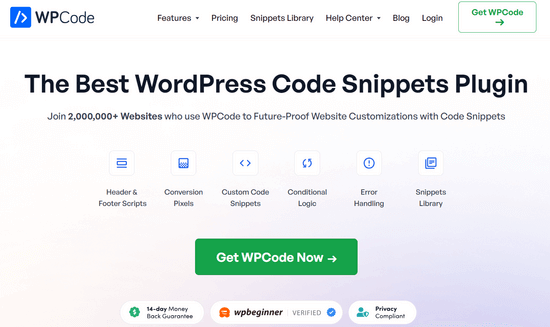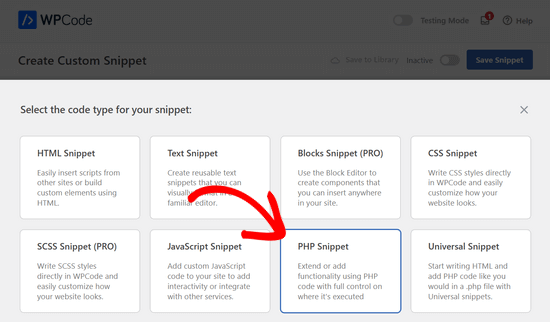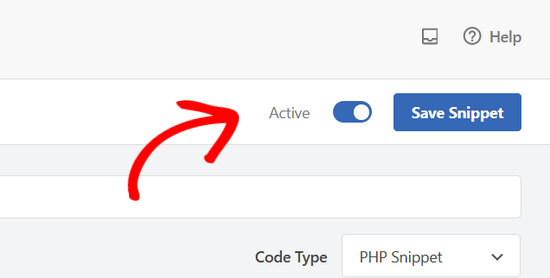Kürzlich fragte uns einer unserer Leser, wie man Unterseiten einer WordPress-Seite anzeigen kann? Diese Frage bekommen wir bei WPBeginner ziemlich oft, und sie unterstreicht ein häufiges Bedürfnis nach Verbesserung der Website-Navigation und der Benutzerfreundlichkeit.
Wenn Sie Ihre WordPress-Website mit übergeordneten und untergeordneten Seiten organisieren, dann möchten Sie vielleicht Ihre untergeordneten Seiten oder Unterseiten auf der übergeordneten Hauptseite anzeigen. Dies hilft den Nutzern, alle in einem bestimmten Abschnitt verfügbaren Informationen leicht zu sehen und schnell zu den relevanten Unterthemen zu navigieren.
Sie können auch den Link zur übergeordneten Seite auf jeder Unterseite anzeigen, um das Surfen zu erleichtern und einen Breadcrumb-Effekt zu erzielen. Diese optimierte Navigation verhindert, dass sich die Nutzer in den Tiefen Ihrer Website verirren, und verbessert das Gesamterlebnis beim Surfen.
In diesem Artikel zeigen wir Ihnen, wie Sie ganz einfach eine Liste von untergeordneten Seiten für eine übergeordnete Seite in WordPress anzeigen können.

Wenn Sie eine Liste von Child-Seiten anzeigen müssen?
WordPress wird mit zwei Standard Inhaltstypen ausgeliefert: Beiträge und Seiten. Beiträge sind Blog-Inhalte, die normalerweise mit Kategorien und Schlagwörtern organisiert sind.
Seiten sind einmalige oder eigenständige Inhalte, die immerwährend sind, wie zum Beispiel eine “Über uns”-Seite oder eine “Kontakt”-Seite.
In WordPress können Seiten hierarchisch aufgebaut sein, d. h. Sie können sie mit übergeordneten und untergeordneten Seiten organisieren. Sie können zum Beispiel eine Produktseite mit untergeordneten Seiten für Merkmale, Preise und Support erstellen.
Um eine untergeordnete Seite zu erstellen, folgen Sie unserer Anleitung zum Erstellen einer untergeordneten Seite in WordPress.
Nachdem Sie Ihre über- und untergeordneten Seiten erstellt haben, können Sie die untergeordneten Seiten auf der übergeordneten Seite auflisten.
Eine einfache Möglichkeit, dies zu tun, ist die manuelle Bearbeitung der übergeordneten Seite und das Hinzufügen einer Liste von einzelnen Links.

Allerdings müssen Sie die übergeordnete Seite jedes Mal manuell bearbeiten, wenn Sie eine untergeordnete Seite hinzufügen oder löschen. Wäre es nicht schöner, wenn Sie einfach eine untergeordnete Seite erstellen könnten und diese automatisch als Link auf der übergeordneten Seite erscheinen würde?
Werfen wir also einen Blick auf einige andere dynamische Möglichkeiten, um schnell eine Liste von Unterseiten auf der übergeordneten Seite in WordPress anzuzeigen. Wir zeigen Ihnen drei Methoden, damit Sie die für Sie beste auswählen können:
Methode 1. Anzeige untergeordneter Seiten auf übergeordneter Seite mithilfe eines Plugins
Diese Methode ist einfacher und wird für alle Benutzer empfohlen.
Zunächst müssen Sie das Page-list-Plugin installieren und aktivieren. Weitere Details finden Sie in unserer Schritt-für-Schritt-Anleitung für die Installation eines WordPress-Plugins.
Nach der Aktivierung müssen Sie die übergeordnete Seite bearbeiten und einfach den folgenden Shortcode an der Stelle hinzufügen, an der Sie die Liste der untergeordneten Seiten anzeigen möchten.
[subpages]
Sie können Ihre Seite nun speichern und in einer neuen Browser-Registerkarte ansehen. Sie werden feststellen, dass sie eine einfache Aufzählung aller untergeordneten Seiten anzeigt.

Wenn Sie möchten, können Sie einige benutzerdefinierte CSS hinzufügen, um das Aussehen der Liste zu ändern. Hier sind einige CSS-Beispiele, die Sie als Ausgangspunkt verwenden können.
1 2 3 4 5 6 7 | ul.page-list.subpages-page-list { list-style: none; list-style-type: none; background-color: #eee; border: 1px solid #CCC; padding: 20px;} |
Nachdem Sie Ihr benutzerdefiniertes CSS angewendet haben, können Sie eine Vorschau der übergeordneten Seite anzeigen. So sah es auf unserer WordPress-Test-Website aus.

Das Plugin bietet eine Reihe von Shortcode-Parametern, mit denen Sie die Tiefe, den Ausschluss von Seiten, die Anzahl der Elemente und mehr festlegen können. Details finden Sie auf der Seite des Plugins für eine ausführliche Dokumentation.
Methode 2. Auflisten untergeordneter Seiten für eine übergeordnete Seite mit Code
Diese Methode ist etwas komplizierter und erfordert, dass Sie Code zu Ihrer WordPress-Website hinzufügen. Wenn Sie dies noch nicht getan haben, sehen Sie sich bitte unsere Anleitung zum Kopieren und Einfügen von Code in WordPress an.
Um untergeordnete Seiten unter einer übergeordneten Seite aufzulisten, müssen Sie den folgenden Code in einem Code-Snippets-Plugin oder in der Datei functions.php Ihres Themes hinzufügen:
1 2 3 4 5 6 7 8 9 10 11 12 13 14 15 16 17 18 19 20 | function wpb_list_child_pages() { global $post; if ( is_page() && $post->post_parent ) $childpages = wp_list_pages( 'sort_column=menu_order&title_li=&child_of=' . $post->post_parent . '&echo=0' );else $childpages = wp_list_pages( 'sort_column=menu_order&title_li=&child_of=' . $post->ID . '&echo=0' ); if ( $childpages ) { $string = '<ul class="wpb_page_list">' . $childpages . '</ul>';} return $string; } add_shortcode('wpb_childpages', 'wpb_list_child_pages'); |
Bei WPBeginner empfehlen wir immer, Code in WordPress mit dem WPCode Plugin hinzuzufügen.
Mit WPCode können Sie ganz einfach individuellen Code hinzufügen, ohne die Dateien Ihres Themes zu bearbeiten, so dass Sie sich keine Sorgen machen müssen, dass Ihre Website beschädigt wird.

Zunächst müssen Sie das kostenlose WPCode-Plugin installieren und aktivieren. Eine schrittweise Anleitung finden Sie in diesem Leitfaden zur Installation eines WordPress-Plugins.
Sobald das Plugin aktiviert ist, navigieren Sie in Ihrem WordPress-Dashboard zu Code Snippets ” Snippet hinzufügen. Fahren Sie dort mit der Maus über die Option “Eigenen Code hinzufügen (neues Snippet)” und klicken Sie auf die Schaltfläche “Eigenes Snippet hinzufügen”.

Dann müssen Sie aus der Liste der Optionen, die auf dem Bildschirm erscheinen, “PHP Snippet” als Codetyp auswählen.

Als Nächstes fügen Sie einen Titel für Ihr Snippet hinzu, der beliebig sein kann, damit Sie sich an den Code erinnern können.
Fügen Sie nun einfach den obigen Code in das Feld “Codevorschau” ein.

Schalten Sie dann einfach den Schalter von “Inaktiv” auf “Aktiv” um und klicken Sie auf die Schaltfläche “Snippet speichern” oben auf der Seite.

Dieser Code prüft zunächst, ob eine Seite ein übergeordnetes Element hat oder die Seite selbst ein übergeordnetes Element ist.
Handelt es sich um eine übergeordnete Seite, werden die mit ihr verbundenen untergeordneten Seiten angezeigt. Handelt es sich um eine untergeordnete Seite, so werden alle anderen untergeordneten Seiten der übergeordneten Seite angezeigt.
Wenn es sich nur um eine Seite ohne untergeordnete oder übergeordnete Seite handelt, wird der Code nichts tun. In der letzten Zeile des Codes haben wir einen Shortcode hinzugefügt, mit dem Sie einfach untergeordnete Seiten anzeigen können, ohne Ihre Seitenvorlagen ändern zu müssen.
Um untergeordnete Seiten anzuzeigen, fügen Sie einfach den folgenden Shortcode in eine Seite oder ein Textwidget in der Seitenleiste ein:
[wpb_childpages]
Vergessen Sie nicht, Ihre Änderungen zu speichern und eine Vorschau in einem Browser-Tab zu erstellen. So sieht es auf unserer Testseite aus.

Sie können diese Seitenliste nun mit einem benutzerdefinierten CSS gestalten. Hier finden Sie einige Beispiele für CSS-Code, die Sie als Ausgangspunkt verwenden können.
1 2 3 4 5 6 7 | ul.wpb_page_list { list-style: none; list-style-type: none; background-color: #eee; border: 1px solid #CCC; padding: 20px;} |
Methode 3. Dynamische Anzeige von Child-Seiten ohne Shortcode
Die Verwendung von Shortcodes ist praktisch, aber das Problem dabei ist, dass Sie Shortcodes auf allen Seiten hinzufügen müssen, die übergeordnete oder untergeordnete Seiten haben.
Es kann sein, dass Sie auf vielen Seiten Shortcodes haben, und manchmal vergessen Sie sogar, sie hinzuzufügen.
Ein besserer Ansatz wäre, die Seitenvorlagendatei in Ihrem Thema zu bearbeiten, so dass es automatisch untergeordnete Seiten anzeigen kann.
Dazu müssen Sie die Vorlage main page.php bearbeiten oder eine benutzerdefinierte Seitenvorlage in Ihrem Thema erstellen.
Sie können Ihr Haupt-Theme bearbeiten, aber diese Änderungen gehen verloren, wenn Sie Ihr Theme ändern oder aktualisieren. Deshalb ist es besser, wenn Sie ein Child-Theme erstellen und Ihre Änderungen dann im Child-Theme vornehmen.
In Ihrer Seitenvorlagendatei müssen Sie diese Codezeile dort einfügen, wo Sie untergeordnete Seiten anzeigen möchten.
1 | <?php wpb_list_child_pages(); ?> |
Das war’s schon. Ihr Theme erkennt nun automatisch untergeordnete Seiten und zeigt sie in einer einfachen Liste an.
Sie können die Stile mit CSS und Formatierung anpassen. Hier ist ein Beispiel dafür, wie die OptinMonster-Website die übergeordnete Seite und die Unterseiten anzeigt:

Wir hoffen, dass dieser Artikel Ihnen geholfen hat, untergeordnete Seiten für eine übergeordnete Seite in WordPress aufzulisten. Vielleicht interessiert Sie auch unser Leitfaden zu den wichtigsten Seiten, die Sie auf einer neuen WordPress-Website erstellen sollten, und unser Vergleich der besten Drag & Drop-WordPress-Seitenersteller, mit denen Sie individuelle Layouts ohne Code erstellen können.
Wenn Ihnen dieser Artikel gefallen hat, dann abonnieren Sie bitte unseren YouTube-Kanal für WordPress-Videotutorials. Sie können uns auch auf Twitter und Facebook finden.





Denise
For third level pages (grandchild), I want to show the same menu that is seen on the child pages (all the child links of the parent). With this snippet, when on a grandchild page, I only see the other grandchild pages in the menu. How would this code need to be modified to show the all child links even when on grandchild pages?
vicky
how to get child page ids not the granchild ids…………….pls help im a bigginner
Meredith L
I’m relatively new to blogging and I recently switched over to the Kale WordPress theme. I have been trying to do page attribute pages (under the parent page Recipes) so I can have separate categories for appetizers, desserts, etc. Everything seems to go through on the admin part but then on the site itself there are no page attributes/drop down form the Recipes category. What am I doing wrong? It is all set to public so I’m not sure what the problem is.
Daves
Thank you for this code. But I don’t want this to be shown on the homepage (static page), just on the parent pages only. Please how can it be done?
Thank you.
Boris Budeck
I am using Generatepress Theme (created a child theme from it for customizing) and I can’t get this to work. The shortcode is displayed in the output page, it seems it is not even ercognized as being a shortcode. I use Elementor widgets and neither text nor shortcode widgets work.
Any idea of how to make it work when using elementor widgets?
WPBeginner Support
Hi Boris,
Please try adding this code to your theme’s functions.php file or a site-specific plugin.
add_filter('widget_text','do_shortcode');1-click Use in WordPress
Admin
Frederic
a great post, it’s exactly what I’m looking for since many hours ! and it works like a charm, just adding the code in the function.php of the theme then adding the short code in the page where I want the sub pages to appear, and voilà!!!
wonderful, thanks a lot for your generosity !!
WPBeginner Support
Hi Frederic,
Glad you found it useful You may also want to subscribe to our YouTube Channel for more WordPress video tutorials.
You may also want to subscribe to our YouTube Channel for more WordPress video tutorials.
Admin
Mariano
Hi!
Thanks for the code. How can I display the featured image of each child page?
Ron
Like with so many of the snippets we find, one has to go through all the comments in order to get it to work. What’s wrong with testing what you write?
Alicia
Can you do a drop down menu for parent/child pages on wordpress.com, or does it have to be the .org version?
Razvan
What if I want to display child posts, not child pages?
Rudy
Using this code ends up displaying the parent page along with the child pages, which is redundant. As I understand it, what we really need is to display only the child pages, not the parent page. Any suggested modification that can do this?
Michael Feske
Great, but it works not
add_shortcode is correct or must it be add_filter https://www.wpbeginner.com/wp-tutorials/how-to-use-shortcodes-in-your-wordpress-sidebar-widgets/ ?
with add_shortcode is error Fatal error: Uncaught Error: Call to undefined function add_shortcode()
with add_filter is no error but it works nort
Milos
On plugins update, for some strange reason I always get an error:
Fatal error: Cannot redeclare wpb_list_child_pages() (previously declared in …/wp-content/themes/pagelines/functions.php:25) in …/wp-content/themes/pagelines/functions.php on line 34
Jeffrey Fry
How can you also display the date of the child page?
ethann
Hello great article,
Can you please help me creating a dropdown of child pages in parent page.I need this functionality for one of my wordpress project and i am totally newbie to wordpress.
Alex
Am I the only one that cannot get it to work?
I have the following structure
About
— Page 1
— Page 2
— Page 3
When on the “About” or a child page (1, 2 or 3) I would like to have a list with my parent page (About) and all children (1, 2, 3) – Anyone got that working?
Thanks!
Kendra
OMG sorry this is annoying Please ignore my other posts. Didn’t realize you couldn’t paste code into the comments.
I was NOT able to get it to work with wpb_list_child_pages();
I WAS able to get it to work with echo do_shortcode( ‘[wpb_childpages]’)
And to get the title of the parent page, i inserted this above the child page list:
$current = $post->ID;
$parent = $post->post_parent;
$grandparent_get = get_post($parent);
$grandparent = $grandparent_get->post_parent;
PHP if ($root_parent = get_the_title($grandparent) !== $root_parent = get_the_title($current)) {echo get_the_title($grandparent); }else {echo get_the_title($parent);
Jean Bishop
I am using this code and it works great. Is it possible to also display categories in menus along with pages?
Michelle
Hi,
I want to do the following
Parent page must be either for sale and or for rent
Then I want the child for example a province (gauteng) to link to the for sale and the for rent parent.
How do I do that?
Michelle
Zakhar
How can i create shortcode with param, for example, [wpb_childpages id=”1″], where id=”1″ is an id of parent page?
Strand
Hi,
Is it possible to limit the links to a specific number such as maximum 12 child pages?
Thanks
Aander
Thank you,
Could you explain, please, how can I organize child pages in drop down list that would be accessible through the parent page? (I don’t want the visitors could see all child pages in a form of a blogroll.)
I.e., on the parent page I want to create drop down list (listbox) to which child pages would be added in predefined order (say in alphabetical order). After reading Introduction a visitor can proceed by choosing any page from the list at her wish (child pages has no logical connection so in any case she will search the exact page).
Is ‘my dream’ realizable?
Thank you again.
Quantum-mecha
How do I add pagination for Child Page?
Thanks!
Astrid
Hi WPBeginner Staff,
I used the code you guys provided with the “short code option” and it worked (links to child pages). However, I wanted to use the permanent option, and that didn’t work.
When I added this line of code [ ] the parent page returns a 500 error and no child pages are displayed at atll.
What am I doing wrong?
On a side note if I wanted to display and excerpt with its respective image how would I go about it? Thanks!
Astrid
I was able to figure this out.
I added the code snippet then added this shortcode [wpb_childpages] to the parent page where I wanted the child pages displayed. Awesome!
Now in order to display excerpts and an image would I use the same queries– just like posts under a category.
Thanks in advance
Jade
Hey I was wondering what you meant by ‘query’? How exactly did you get the excerpts and images to display in the parent page?
Thanks!
Mehar
Really useful. Thank you.
Pradeep
Could someone confirm that the example page used in this tutorial http://optinmonster.com/how-it-works/ uses this feature or not? To me it looks like it they are using tabs, instead of child pages.
If I’m right, could someone direct me to a resource to get that feature, as I’m desperately looking for a fluid solution like the one they have in that page?
Many thanks,
Pradeep
Andrew Roberts
For the non-shortcode option, you might want to let users know they need to either change
return $string;toecho $string;orin their page template echo out the function
echo page_list_child_pages();Thanks to Erik for pointing this out above
Meredith Adams
Thank you!
Gaby
Thank you! I was wondering why the code wouldn’t work…
Howard
Hi, I can get this to work when I am visiting my domain with a subdirectory (e.g – example.com/home) but when viewing the site without this (example.com) the list of sub pages is not listed. Can anyone point me as to where I am going wrong?
Thanks in advance – very new to WordPress.
Emily Jennewein
How do you get this function to display the parent page itself at the top of the list along with the list of child and grandchild pages? On the child pages it does not list the parent page.
Michael
how can i customized this to just display the child page of a specific page?
Yester
How do u add a active class on the current ?
Jenny
Is there now a plugin that can do same ?
and also can we decide where the box with submenus pages will go in any are of the page not just top of page? Using a plugin
WPBeginner Staff
Yes it can be used for custom post types. Like this:
function wpb_list_child_pages() {
global $post;
if ( 'movie' == get_post_type() && $post->post_parent )
$childpages = wp_list_pages( 'post_type=movie&sort_column=menu_order&title_li=&child_of=' . $post->post_parent . '&echo=0' );
else
$childpages = wp_list_pages( 'post_type=movie&sort_column=menu_order&title_li=&child_of=' . $post->ID . '&echo=0' );
if ( $childpages ) {
$string = '' . $childpages . '';
}
return $string;
}
add_shortcode('wpb_childpages', 'wpb_list_child_pages');
Daniela
This is great! Is there a way to do the same for Custom Post Types that have child posts?
Caroline
Also wondering!
If anyone knows, please help!
dpc
Is there a way to modify this in order to print custom post type child posts on a custom post type post page? Thanks, it is very handy!
Sokeara
It’s very greate for me! Anyways I would like to know how can I display title and thumbnail of child page to parent page.
Ashley Bell
Hi, I have the same query. I really like how the list is styled on the Beginners Blueprint page but I have no idea how to start. Can someone recommend an article to read or give some advice, thanks.
Razvan Zamfir
Hello!
Nice snippet, but how do I list only grandchild pages?
Thank you!
amitabha197
There is an error in the pages which are not having child pages so I have slightly modified
if( count($childpages) != 0 ) {
$string = ” . $childpages . ”;
}
instead of
if( $childpages ){
$string = ” . $childpages . ”;
}
WPBeginner Staff
In order to execute a shortcode in WordPress templates you need to add it like this:
Matt Rock
I couldn’t get the template code “wpb_list_child_pages();” to work, but echo shortcode did the trick. Cheers!
Erik
Just change the “return $string” to “echo $string” (this will print out the pages).
fariha
thanks, it worked
Coen Siebenheller
I’ve added the code to the functions.php and when i add the [wpb_childpages] shortcode in side my text it works. But when try to add to one of my templates it doesn’t show a thing. Anybody knows what i’m doing wrong?
Elena Rapisardi
Great explanation!!
Is there a way to display always the parent pages?
Quin
This is brilliant, thanks.
Is there a way to adapt it so the Parent displays the Grandchild, and not the Child?
Dejan
Great function , thanks !
Richelly Italo
The great idea, thanks dude.
Steph
Can you tell us how to stop the list at the first level? I’d like to show all the subpages of that parent, but not the subpages’ children. Thanks.
Stefan
Just add &depth=1
sort_column=menu_order&title_li=&child_of=’ . $post->post_parent . ‘&echo=0&depth=1
Martin Capodici
Great. I love this idea of a site plugin and seeing the code you are adding (so you know it is clean and doesn’t do bad stuff) rather than relying on some plugin that could be installing anything.
For something as simple as listing child pages I agree it should be part of a larger plugin rather than just one plugin otherwise you end up with so many plugins it is hard to keep track.
Rishi Gangoly
This is great. I had a page on my website called “Services” and was manually linking the sub-pages, but not any more. Awesome. Thanks for this tip. Worked like a charm and did exactly what I was doing manually.
Bojan
This is great! Putting it in a plugin is great feature and great opportunity to extend functionality by adding:
– child page featured image (as thumbnail)
– child Title
– rest of the meta (author, date, comment count)
– styling in columns maybe
and so on
This way, we would have almost complete Portfolio plugin – portfolios made of Pages rather than just made of custom post types.
Thank you..
Ivica
The Best plugin for displaying child pages on a sidebar for those who want even faster and “cleaner” child-pages-navigation:
http://wordpress.org/plugins/child-page-navigation/
yousef mayeli
hi there
thanks it was very useful . but if you could show it by video it was very more useable.as tyler moor would do
thanks
yousef
Nancy
This is great! I have a lot of manually added links to child pages, and this is going to make maintaining our site MUCH easier. I’ve just been testing in my development environment, and I’d like to tweak the function a little bit, so that on a child page, when the shortcode is included, all of the children of the same parent are listed EXCEPT for the currently displayed page. I’m really still learning PHP, so while I’ll be trying to figure this one out on my own, I’d welcome any assistance in making that change to the code.